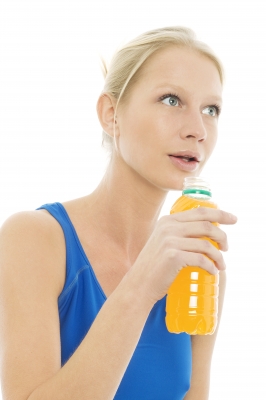Get Informed Three Letters You Should Know: BPA Tweet
By Taja Allen
 Plastic is used all over the world for many different things from baby bottles to forks and spoons. But there have been many scientific findings linking plastics to cancer and many other diseases. Plastics release harmful chemicals that cannot be seen or taste into our air, foods, and drinks. Therefore we have no way of actually knowing when we are in the presence of danger. The only way to eliminate the dangerous of plastics is by eliminating our use of plastics. It sounds difficult but it’s really not.
Plastic is used all over the world for many different things from baby bottles to forks and spoons. But there have been many scientific findings linking plastics to cancer and many other diseases. Plastics release harmful chemicals that cannot be seen or taste into our air, foods, and drinks. Therefore we have no way of actually knowing when we are in the presence of danger. The only way to eliminate the dangerous of plastics is by eliminating our use of plastics. It sounds difficult but it’s really not.
You can eliminate your plastic use by choosing plastic alternatives like eco-friendly reusable cups and bags. You can also make wiser choices by selecting items that are in less plastic packaging or none at all. When you go to grocery store bring your own bags. If you must buy plastic be sure to choose plastic with a safe rating. You are probably now wondering, “what is a safe rating?” . Each plastic container has a number on the bottom of the container. The numbers range from one to seven. Each number describes the type of plastic that the container is made of. Seems harmless? Not really… many of these plastics are hazardous. How are we supposed to know the difference between a safe soda and hazardous one? Luckily for us healthychild.org made an outline of the seven types of plastics and their safety rating:
![]() PET (Polyethylene Terephthalate): AVOID
PET (Polyethylene Terephthalate): AVOID
Common Uses: Soda Bottles, Water Bottles, Cooking Oil Bottles
Concerns: Can leach antimony and phthalates.
![]() HDPE (High Density Polyethylene): SAFER
HDPE (High Density Polyethylene): SAFER
Common Uses: Milk Jugs, Plastic Bags, Yogurt Cups
![]() PVC (Polyvinyl Chloride, aka Vinyl): AVOID
PVC (Polyvinyl Chloride, aka Vinyl): AVOID
Common Uses: Condiment Bottles, Cling Wrap, Teething Rings, Toys, Shower Curtains
Concerns: Can leach lead and phthalates among other things. Can also off-gas toxic chemicals.
![]() LDPE (Low Density Polyethylene): SAFER
LDPE (Low Density Polyethylene): SAFER
Common Uses: Produce Bags, Food Storage Containers
![]() PP (Polypropylene): SAFER
PP (Polypropylene): SAFER
Common Uses: Bottle Caps, Storage Containers, Dishware
![]() PS (Polystyrene, aka Styrofoam): AVOID
PS (Polystyrene, aka Styrofoam): AVOID
Common Uses: Meat Trays, Foam Food Containers & Cups
Concerns: Can leach carcinogenic styrene and estrogenic alkylphenols
![]() Other this is a catch-all category which includes:
Other this is a catch-all category which includes:
PC (Polycarbonate): AVOID - can leach Bisphenol-A (BPA). It also includes ABS (Acrylonitrile Butadiene Styrene), SAN (Styrene Acrylonitrile), Acrylic, and Polyamide. These plastics can be a safer option because they are typically very durable and resistant to high heat resulting in less leaching. Their drawbacks are that they are not typically recyclable and some need additional safety research. New plant-based, biodegradable plastics like PLA (Polylactic Acid) also fall into the #7 category.
Source(s): healthychild.org ,Image: Ambro / FreeDigitalPhotos.net